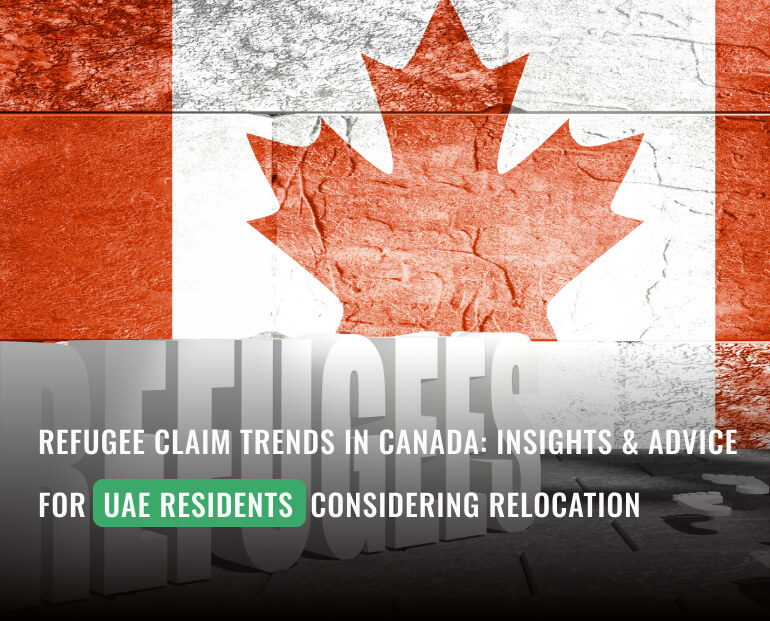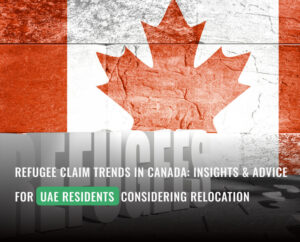Canada just announced its immigration plan for the next three years. The method is simple and well-planned. The government wants to keep the number of permanent residents steady while cutting back a lot on temporary residents. This change is based on real problems that people are facing all over the country.
There needs to be help for housing shortages, healthcare systems that are under a lot of stress, and schools that are too full. The goal for permanent residents will stay at 380,000 a year. That’s a little less than the 395,000 in 2025. On the other hand, temporary residents will see big cuts in the next few years.
The main types of permits that are affected are work permits and study permits. The number of people goes down from about 673,650 in 2025 to 385,000 in 2026. Then they fall to 370,000 for both 2027 and 2028.
Important Numbers at a Glance
Permanent Resident Admissions (Yearly):
- 2026: 380,000
- 2027: 380,000
- 2028: 380,000
Breakdown of Economic Class:
- Annual spots: Skilled workers and business migrants: about 240,000 spots each year
- Provincial programs: Programs for Provincial Nominees: More money given out
- French speakers: French-speaking immigrants make up 9% to 10.5% of the total (30,000 to 35,000).
Temporary to Permanent Pathways (2026–2027):
- Work permit holders: People with work permits: up to 33,000
- Protected persons: people who are protected or refugees: about 115,000
Temporary Resident Reductions:
- 2025 baseline: Starting in 2025, the number of temporary residents will drop to 673,650.
- 2026 target: Target for 2026: 385,000 (43% less)
- 2027-2028 target: Target for 2027–2028: 370,000 per year
Having trouble figuring out how to move to Canada from the UAE?
DM Consultants helps skilled workers, business owners, and investors move to a new country. We look at your qualifications and find the best program for you. We make sure that your applications for a skilled worker visa and work permit are correct. Getting Canadian immigration done from the UAE needs expert help at every step.
What Does This Means for Permanent Immigration?
The plan keeps the number of permanent immigrants the same for all three years. Here’s how those 380,000 spots are spread out each year:
| Category | 2026 Target | Percentage | Notes |
| Economic Class | ~240,000 | 64% | Skilled workers, business migrants, provincial nominees |
| Family Reunification | ~84,000 | 22% | Spouses, partners, parents, children |
| Humanitarian | ~56,200 | 14% | Refugees, protected persons |
Economic immigration
About 64% of all permanent admissions are now economic immigrants. That’s a rise from 59% in the past. This change means that there are more places for skilled workers and business immigrants. More money is going to provincial nominee programs and federal skilled worker streams.
The focus is on people who can fill job openings. Healthcare, technology, and engineering are some of the fields that are in high demand. The plan specifically says that engineers, scientists, and tech workers should come to the country.
French speakers who live outside of Quebec will also see more targets until 2028. The percentage goes up from 9% in 2026 to about 10.5% by 2028. That means about 30,000 to 35,000 people who speak French every year. This helps Francophone communities all over Canada.
Reductions for Temporary Residents
This is where the plan starts to make big cuts. The government is cutting temporary admissions by almost half. The goal is clear: make sure that temporary residents make up less than 5% of Canada’s population.
Goals for Temporary Residents by Year:
| Year | Total Temp Residents | Work Permits | Study Permits |
| 2025 | 673,650 | 367,750 | 305,900 |
| 2026 | 385,000 | 230,000 | 155,000 |
| 2027 | 370,000 | 220,000 | 150,000 |
| 2028 | 370,000 | 220,000 | 150,000 |
Cuts to Study Permits
In 2026, the number of international student permits will drop by about half. The numbers drop from about 305,900 to only 155,000. Then they go down a little more to 150,000 in 2027 and 2028. By 2027, the government wants the number of temporary residents to be less than 5% of the total population.
Right now, about 6% to 7% of Canada’s population are temporary residents. These cuts are meant to give infrastructure time to catch up. Housing, healthcare, and education systems need some space to grow.
Changes to Work Permits
In 2025, there are 367,750 work permits. In 2026, there are only 230,000. Then, in 2027 and 2028, they go down to 220,000. That means a drop of about 37% to 40% overall.
The plan puts higher-skilled jobs and roles in sectors that are short on workers at the top of the list. In the future, there will be much stricter rules for low-wage work permits. Faster processing and clearer paths make it easier for high-skilled immigrants to come to the US.
Ways to Go from Temporary to Permanent Status
This is something cool about the new plan. The government makes fast tracks for people while cutting new temporary entries. These pathways are helpful for people who are already living in Canada on temporary permits. For 2026 and 2027, two big projects stand out:
People with Work Permits:
- Transition numbers: Up to 33,000 people with work permits move to permanent residence.
- Priority criteria: People with skilled jobs and a good work history get first dibs.
- Preference given: People who pay taxes and work in high-demand jobs get first dibs.
- Economic recognition: The government knows that these workers are already helping Canada’s economy.
People Who Are Safe:
- Total eligible: About 115,000 eligible refugees become permanent residents.
- Safety acknowledgment: This honors people who can’t safely go back to their home countries.
- Inclusion scope: Includes convention refugees and other people who are already safe in Canada
- Community integration: These people have already made lives and connections in Canadian communities.
More help with the transition
There are a number of useful tools in the plan to help people make the change:
Improvements to the processing of applications:
- Bridging permits: Bridging open work permits are still available for PR applicants who are waiting for decisions.
- Faster processing: Some applications for worker and family sponsorship will be processed more quickly.
- Additional funding: More money has been given to IRCC to improve the services they offer.
- Priority treatment: Applications from workers in high-demand fields get priority processing.
Support for Regions and Industries:
- Tariff assistance: Special attention to industries that are hurt by trade tariffs and changes in the economy
- Geographic focus: More attention is being paid to rural and remote areas that need workers.
- Increased allocation: Provincial Nominee Programs get more money to meet the needs of the regional labor market.
- Regulation balance: More rules for low-wage jobs, but more support for high-skill jobs
Conclusion
Canada’s immigration plan for 2026 to 2028 is a careful adjustment. Permanent immigration stays at 380,000 people each year for all three years. The real change is in temporary admissions, which are down 43%. The plan values people who have already made a successful life in Canada.
Are you unsure about your Canadian visa options from the UAE?DM Consultant gives clear advice on how to move to Canada as a skilled worker. We help people who are looking for work, investors, and business owners figure out what to do next. Our local advisors in the UAE are honest about their fees and give you realistic time frames.





















